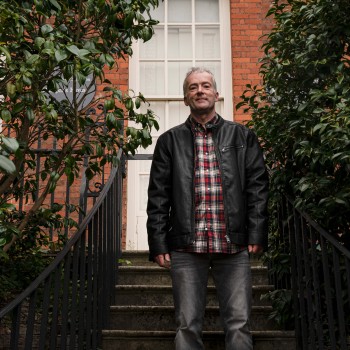Liverpool’s Attic Theory isn’t just another rock band. They’re a powerful mix of alternative rock, post-grunge edge, and classic rock energy. Led by the strong vocals of Lewis Wright, the band has already won awards like “Best New Band” at Planet Rock’s “The Rocks.” Their EP, “The Sign of an Active Mind,” has gotten great reviews, and their songs are played on big radio stations like Planet Rock, Kerrang Radio, and Total Rock Radio.
But their new offering, “What We Fear the Most,” isn’t just another collection of catchy tracks. It’s a deep and emotional look at the fears and worries we all carry inside. Each part of the song talks about a different fear, all connected by the band’s special sound and truthful words.
The album starts with the powerful track “Violent Delight.” It’s not just about calling out a liar—it’s about the freedom of finally facing them. The narrator, fueled by righteous fury, dismantles their web of deceit with imagery of a “strained leash” and clenched “gritted teeth.” “Violent Delight” isn’t just about anger—it’s about taking back control and finding peace by breaking through lies.
The theme of lies goes deeper in “Tattooed Heart.” This song looks at the stories we tell ourselves. The “tattooed heart” is a symbol for the permanent marks left by our experiences, relationships, and past decisions. The song celebrates the power of self-expression, the act of “surrendering to self-expression,” even when it means facing judgment. These “tattoos” become a part of our identity, a testament to our resilience.
Attic Theory tackles mental health struggles with unflinching honesty in “Papier-Mâché.” The “papier-mâché” mask represents the facade we wear to conceal the turmoil within. The narrator thinks about running away, showing the fear and doubt that often come with illness. The pills represent both control and giving up, trying to “fix my broken thoughts.” The constant itch is a strong symbol for the worry that stays, even with medicine. In the end, “Papier-Mâché” is a call for honesty, a desire to take off the mask and be real, even when it’s hard.
The journey through fear goes on with “Narrow Lines,” where loneliness and self-made limits take the spotlight. The narrator stands on a symbolic ledge, a cold image of feeling disconnected and hopeless. The huge gap between them and the world below shows how far they feel from others. The “narrow lines” are the boundaries they’ve built for themselves, afraid of what’s outside. The repeated cry, “Talk me off that ledge,” shows their deep need for connection and the bravery to escape their own mental prison.
As “Million Little Things” plays, we dive into regret and fear about life. The narrator stays awake, troubled by the results of past choices. The “million little things” are the small decisions that add up, shaping where we are now. Lines like “a soothing sound of uncertainty” show the fear of the unknown and the heaviness of past mistakes. But there’s still a bit of hope. The plea, “Please don’t take me yet,” suggests a wish for forgiveness and another chance.
Just when “Million Little Things” makes us feel exposed, “Dare to Dream” brings a strong message of hope. The main character is underwater, fighting a heavy force. This force could be life’s challenges, past pain, or self-doubt. But even while struggling, they “dare to dream.” Every blink and breath shows their strength. The chorus, with its repeated line “Dare to Dream,” tells everyone to take action. It reminds us to keep chasing our dreams, no matter how tough it gets.
Love shines as a source of hope in “Your Light.” The stars and constellations show a love that’s beautiful and forever. The main character feels pulled to their loved one, like the sun’s gravity. The song is a promise of never-ending loyalty. Lines like “Let me be your light” show a wish to give support, comfort, and guidance. In a dark world, “Your Light” celebrates how love can change everything.
The album shifts in “A Brand-New Burden,” looking at the fight to escape feeling stuck and trapped by your own limits. The narrator watches the sunrise, wishing for something to break their boring routine. The feeling of being stuck, “crawling when I should be running,” reflects the internal conflict between the desire for growth and the fear of the unknown. The “brand new burden” is a symbol for the weight of growing and stepping out of our comfort zones. But as the sun rises, there’s a spark of hope. The last line, “I’ll take it all on,” shows a fresh sense of strength and resolve.
Attic Theory’s “What We Fear the Most” takes you on an emotional journey. It faces our biggest fears but ends with a strong message of hope and strength. With their electrifying sound and relatable lyrics, Attic Theory is a band to watch. Don’t miss out on this exploration of the human condition set to a soundtrack of driving rock anthems.
For more follow Attic Theory-on-YouTube, Attic Theory-on-Instagram, attictheory.co.uk



